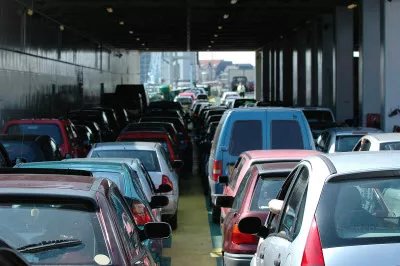
A new report from market research firm Frost & Sullivan underlines what has already become apparent in the field. Transportation is one of the most common flash points for a smart city. The equation seems to work like this: Transportation problems become top of mind. City government turns to ICT for solutions. As the solutions get rolled out, the government realizes that the core principles apply to other parts of the city.
Although not spelled out by Frost & Sullivan, other hot spots include energy, smart buildings, e-government and public safety. -- Jesse Berst
Frost & Sullivan: ICT to Transform Transportation as a Prelude to Smart Cities
Next Generation connectivity, Big Data, cloud and security solutions will be the building blocks of a smart society
LONDON -- Convergences among transportation, energy, and cities will become reality as new technologies emerge to enable a more efficient and sustainable delivery of services consumed in an urban setting. ICT can enable the smooth flow of information, money, and energy among different devices, stakeholders, and systems to bring about positive experiences for citizens. It is also through ICT that services consumed in a community will change and thus create new opportunities via revenue streams. By targeting the efficiencies that can be gained through efficient transport systems in a city, ICT tools can become a catalyst for a city to become smarter and sustainable.
"The role of ICT in a multimodal electric urban transportation system is defined by the building blocks of connectivity, big data, cloud & software, as well as digital identification and security solutions," said Frost & Sullivan Senior Industry Analyst Yiru Zhong. "The pilots highlighted in Frost & Sullivan's analysis on ICT role in smart transportation in Europe shows that there are various ways to achieve a smart transformation and integrate diverse parts of the transportation system with urban stakeholders. There are also multiple ways in which each of the building blocks could be utilized."
While there are many options to integrate the disparate elements within a smart cities context, ICT vendors are relying on pilots and trial projects to unveil user habits, determine technologies field performance and identify viable revenue models.
A case in point is the application of data analytics in emerging areas such as smart transportation. This process involves the usual large data obstacles of organization, management, determination of the 'right' kind of data to mine, and translation of data into use. Of these challenges, the definition of 'right' data is the most crucial.
However, since it is still early days in smart transportation transformation and subsequent lead into smart city projects, the ICT industry is determined to remain engaged in this development phase. In establishing relevance in this future trend, communications service providers and vendors are making progress in their own convergence plays to offer credible ICT services to the relevant stakeholders behind this smart transformation.
Telecom service providers' core expertise in connectivity and communication services will be a huge asset to any smart transportation projects. As personal and enterprise mobility becomes more prevalent, smart transportation stakeholders will increase their demand for the seamless integration of personal and enterprise communications. Telcos will see their profile rise higher in smart transportation projects with the availability of M2M communications for process automation and the greater reliance on sensor networks for a truly connected transportation network.
"Just as telcos have been transforming themselves, telco equipment vendors have branched out to capture the necessary vertical-specific communications infrastructure opportunities," noted Zhong. "The key vendors, including Ericsson, AlcatelLucent, and Cisco, have embarked on vertical strategies as well as a quest to move into a pure or hybrid service organisation."
Owing to the profusion of options and demands, there is a need for an easy user interface, one that adapts to different users' habits and device availabilities in a smart transportation system. Empowering citizens will enrich the data pool and could potentially yield an even more personalised transportation service.
The software and IT vendors, on the other hand, focus on applications for smart transportation participants to use. These include enabling applications development, securing usage, and utilising intelligence from applications.
"Smart transformation of sectors and convergence of industries are such that new roles can be created to best meet the demands of a smart community," observed Zhong. "The ICT industry, from all appearances, is actively seeking to remain relevant to this future vision."
If you would like to learn more about Frost & Sullivan analysis, Smart Public Transportation in Europe: A Prelude to Smart Communities – Investigating the Role of ICT, please contact Joanna Lewandowska, Corporate Communications, at joanna.lewandowska@frost.com. Please include your full contact details in the query.
About Frost & Sullivan Frost & Sullivan, the Growth Partnership Company, works in collaboration with clients to leverage visionary innovation that addresses the global challenges and related growth opportunities that will make or break today's market participants.
###
Jesse Berst is the founding Chairman of the Smart Cities Council. Click to subscribe to SmartCitiesNow, the weekly newsletter highlighting smart city trends, technologies and techniques.



